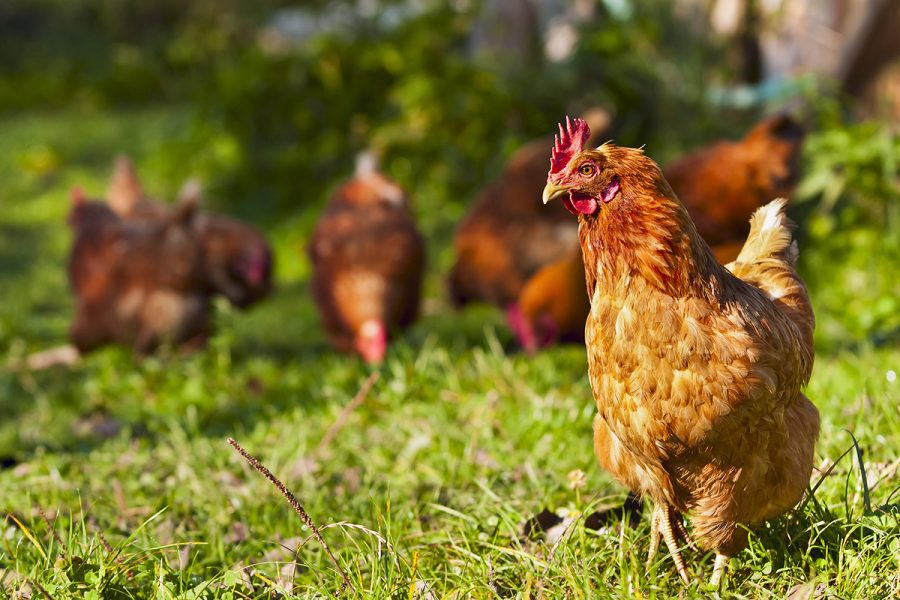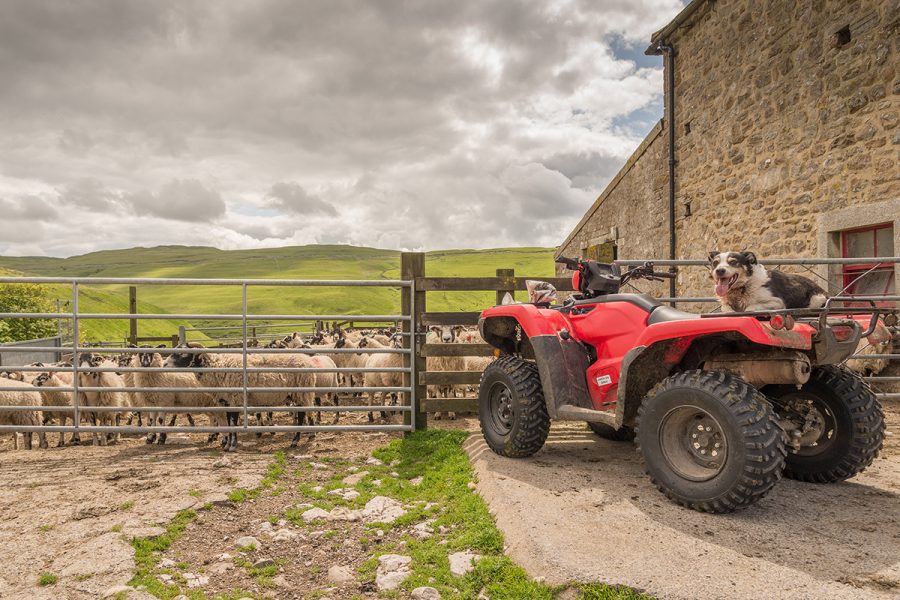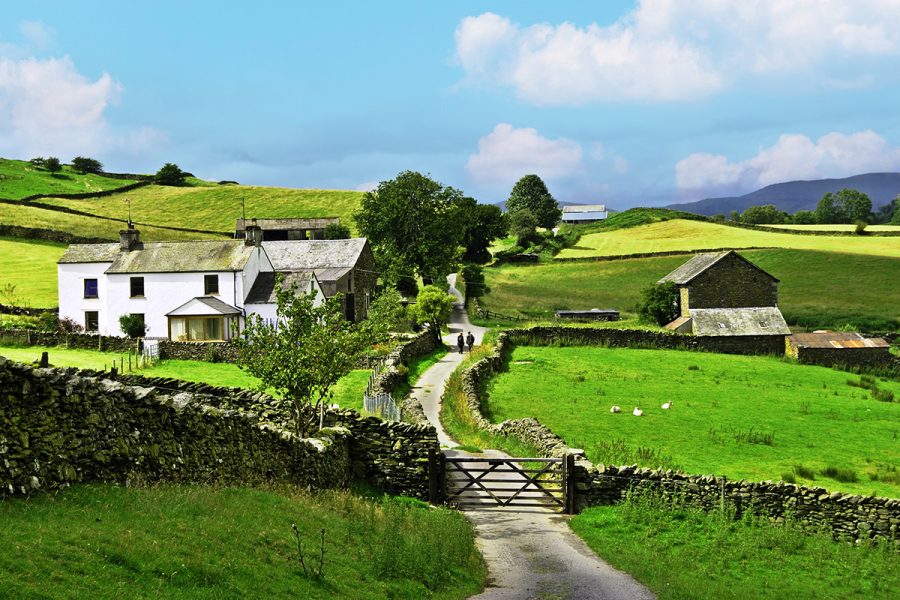Liz Wright explains why insuring smallholdings is very different from insuring standard residential properties
I often receive reasonably priced insurance offers for my house via post or the internet. However, when I have responded to these offers and mentioned my three barns, workshop, and seven stables as outbuildings, none of the insurers have provisions to cover even our feed room. I can only imagine the confusion I would cause if I started discussing whether I needed public liability for my livestock, not to mention whether my modest ‘honesty stall’ outside the gate had any cover.
There are many types of smallholdings, each with its own unique insurance needs. Some smallholders have turned their home and land into a full-time business, but the majority find various ways to generate a small income by utilising their land or property. A popular method is to offer a limited number of campsite or caravan pitches, run a few bed and breakfasts annually, or let out stables for DIY livery. Some may sell produce at Farmers’ Markets or from the gate, while others might exhibit livestock at agricultural shows. Although it is possible to insure all these activities, they usually require separate policies, often from different insurance companies.
There’s also the concern about the level of public liability cover required. At the very least, if you have livestock, you need insurance to be financially protected if they escape or someone lets them out. If they cause an accident, the claim against you could be substantial. But do you need additional liability cover if people visit your smallholding to help you without payment? At what point would you need employers’ liability cover? Regarding product liability, what if someone becomes ill and claims it is due to one of your food products?

If you have livestock, you need insurance to be financially protected if they escape or someone lets them out.
Assessing the Risks
I’m someone who actually likes to do risk assessments, but I think many people are put off by the term. Even if you are fully insured, taking the time to create some risk assessments and mitigations is always worthwhile. It’s not difficult, and if you ever have an incident that becomes contentious, they prove you have done all you can to mitigate any potential risk and that you have behaved responsibly.
Also, at least once a year, think about what you do and if there could be any other risks involved. For example, if your friend brings their children to see the lambs, how do you keep them safe? If your neighbour collects manure from your muck heap, what if they fall and are hurt? If you are at a Farmers’ Market and someone trips over your stall, who takes the claim in that situation?
In addition, regular reviews and updates to your insurance policy are essential as your smallholding activities evolve and diversify. This ensures your cover remains sufficient and reflects any new risks or changes in your operations.

Regular reviews and updates to your insurance policy are essential as your smallholding activities evolve and diversify.
A Policy Especially for Smallholders
There is a company that brings all this together under one insurance policy designed specifically for smallholders. This company is Greenlands Insurance, and they say:
“We understand that whether you own a small farm, hobby farm, or any other type of smallholding, unique challenges require specialised cover. Our dedicated advisers are well-versed in smallholding and small farm insurance, helping ensure that every size and scale of farming operation is sufficiently protected.”
Underwritten by AXA, the policy is specifically designed to cover smallholdings or small farms up to 250 acres or areas of land used for agriculture, horticulture, or grazing purposes. While there is no strict acreage limit defining a smallholding, it is commonly accepted to be any piece of land under 50 acres. This can vary from tiny plots resembling allotments to almost small farms. But if you feel that you fall outside this definition, such as having a very large garden that needs some of this cover or a larger farm with more smallholding-type activities, Greenlands still recommends contacting them to see if they can assist.
According to Greenlands, a smallholding is typically defined as a property with more land than a regular garden but not as extensive as a traditional farm. It is a space where one might cultivate crops, raise livestock, or both. As such, their policy is divided into three main sections of cover: property damage, livestock, and liabilities, which include public and product liability, employers’ liability, and environmental liability. There is also the option to include cover for home buildings and contents, as well as legal expenses.
Their standard smallholder policy caters to the needs of most smallholders, including the sale of produce from home or farm gate, attendance at farmers’ markets, and exhibiting livestock at shows. It also covers DIY livery for up to three horses and caravans or tents for up to six pitches. If you add home buildings and contents to your smallholding insurance, it will cover bed and breakfast for up to six paying guests. You can also extend cover to include additional units for your livery or pitches, or to accommodate more specific requirements.
Stephen Dudley, a smallholder insurance customer, praised the policy. He told Greenlands:
“I just wanted to express my thanks to you and your colleagues for your speed, efficiency, attention to detail, and customer focus in dealing with my application over the last few days. I particularly appreciated the personal touch of you calling me to follow up both the initial enquiry and my coming on board.
I can now understand why Greenlands is so widely recommended – and I will be doing the same.”
Insurance is often described as having an umbrella against bad weather; this insurance seems to have added some waterproofs and wellies as well!
What a Greenlands Smallholders Insurance Policy Covers
Smallholding insurance addresses various associated risks, including:
- Property damage
- Crop or livestock losses
- Storm, flood, or theft damage
- Third-party liabilities (see below)
The policy also offers optional home building and contents cover, as well as legal expenses insurance. Additionally, it includes the following essential liability covers as standard:
- Employers’ liability: Protection for accidents involving employees or casual helpers (paid or unpaid)
- Public and product liability: Cover for injuries on your land or livestock straying onto roads
- Environmental liability: Protection against gradual pollution issues, such as leaking fuel tanks
Roland Williams, Managing Director of Greenlands Insurance, is proud of the extensive protection the company’s smallholding insurance product provides:
“Our smallholders insurance product offers fully tailored, cost-effective solutions for smallholdings and small farms across Great Britain.
According to a 2021 Defra report, the UK has approximately 216,000 farm holdings – nearly half of which are less than 50 acres. These smaller properties, generally considered smallholdings, range from modest plots of land to more substantial acreages.
As such, our diverse customer base includes small-scale commercial farmers and hobbyists, equestrian facility owners, bed-and-breakfast operators, and those using land for non-agricultural activities.
Now in its twelfth year, this initiative partly arose from the growing trend of urban professionals and retirees buying and managing small farms to embrace a rural lifestyle.”
This article has been sponsored by Greenlands Insurance








